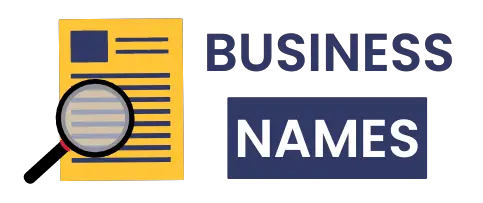I watched my friends lose a staggering amount of money chasing the advice of a celebrated Wall Street icon. You’ve seen the same story play out. A hot fund, a can’t-miss stock, a media-crowned genius promising explosive returns.
Their mistake wasn’t just buying the wrong investment; it was buying into the wrong philosophy entirely—a system designed to enrich the managers, not the investors.
This guide dismantles that broken model. It’s a blueprint for firing the experts, silencing the noise, and putting your financial growth on autopilot with three simple, non-negotiable rules. The goal isn’t to beat the market; it’s to become the market, and then get back to living your life.
1. Ignore the “Gurus” and Buy the Whole Market (Then Go Live Your Life)

The foundational rule is to adopt a long-term, passive, “buy-and-hold” strategy executed through automation. This approach dismantles the myth that successful investing requires constant monitoring, expert stock picks, and attempts to time the market’s unpredictable swings.
The Futility of “Active” Management
Investing can be broadly split into two camps: active and passive. Active investing is what most “gurus” and financial news networks promote; it involves trying to pick individual winning stocks and time the market to buy low and sell high.
Passive investing is the opposite: you simply buy and hold a representation of the entire market, typically through a low-cost index fund, and let it grow over time.
The data on which strategy works better over the long term is not just clear; it’s overwhelming.
According to the Morningstar Active/Passive Barometer, a comprehensive, long-running study on fund performance, less than one out of every four actively managed funds managed to survive and outperform their average passive counterpart over the 10-year period ending in 2024.
The failure of active management is most pronounced in the U.S. large-cap space—funds that invest in big, well-known companies like Apple, Microsoft, and Amazon. In this category, the long-term success rate for active managers plummets to a dismal 7-8%.
This reveals a critical disconnect: the very market segment that receives the most media attention and “expert” analysis is precisely where active stock picking has the lowest probability of success.
Investors who follow the news are being drawn into an arena where the odds are heavily stacked against them from the start.
Time IN the Market, Not TIMING the Market
The core of a passive strategy is the understanding that while markets are volatile in the short term, their long-term direction has historically been up. Data from U.S. Bank shows that over the past 35 years, the stock market has posted a positive annual return in nearly eight out of every 10 years.
The danger of trying to time the market is that you risk missing the best days, which can have a devastating impact on your returns. A buy-and-hold strategy ensures you are always invested to capture that long-term growth.3
The Automation Engine: Dollar-Cost Averaging (DCA)
The practical method for implementing a passive strategy is Dollar-Cost Averaging (DCA). This is the practice of investing a fixed amount of money at regular intervals, regardless of market conditions.
For example, you might automatically invest $500 on the 1st of every month. This simple, automated process removes emotion and the impossible burden of trying to guess the market’s next move.
When the market is down, your fixed $500 buys more shares. When the market is up, it buys fewer shares. Over time, this can lead to a lower average cost per share compared to investing a lump sum at a single point in time.
A hypothetical example from Merrill Lynch illustrates this: investing $100 per month for a year in a volatile stock results in purchasing more shares at a lower average cost than investing the full $1,200 on day one.
However, the true power of DCA is not just mathematical; it is behavioral. It acts as a shield against the most common investor biases.
It forces you to invest consistently, irrespective of recent market performance (countering Recency Bias) and to buy when others are fearful (countering Herd Mentality). It automates rational behavior, protecting you from your own worst impulses.
The Power of Compounding
This long-term, automated approach gives your money the maximum time to benefit from the power of compounding, where your earnings begin to generate their own earnings.
The effect is exponential. An investment of $10,000 earning an 8% annual return grows to $46,610 in 20 years. But if left for 30 years, it grows to $100,627—more than doubling in that final decade alone.
Patience and consistency are the fuel for this wealth-building engine.
2. Become a Fee Hunter—The 1% “Lie” That Costs You a Fortune

The second rule is arguably the most overlooked yet most impactful: a relentless focus on minimizing investment fees.
A seemingly small fee of 1% or 2% is not insignificant; over an investing lifetime, it is a catastrophic drag on wealth that can cost you hundreds of thousands of dollars.
Fees: The Silent Killer of Growth
Investment fees are often the most reliable predictor of future investment returns, but in reverse. The lower the fees, the better the expected outcome.
Fees compound just like returns, but they work against you, creating a “compounding drag” that silently erodes your portfolio’s growth year after year. Every dollar paid in fees is a dollar that is not invested and compounding for your future.
The Shocking Math of Fee Erosion
To understand the devastating impact of fees, consider this powerful example from Saxo Bank. Imagine two people each invest $100,000 for 30 years, and both earn an average annual return of 8% before fees.
- Investor A chooses a low-cost index fund with an annual fee of 0.25%.
- Investor B chooses a typical actively managed fund with an annual fee of 2%.
After 30 years:
- Investor A’s portfolio grows to approximately $961,000.
- Investor B’s portfolio grows to only $574,000.
The difference is $387,000—the price of a house in many parts of the country—lost entirely to higher fees. This isn’t a small rounding error; it is a life-altering amount of money.
Deconstructing the Fees
To become a fee hunter, you must know what to look for. The most common fees include:
Expense Ratios: This is the annual fee charged by mutual funds and Exchange-Traded Funds (ETFs) to cover operating costs. Passive index funds often have expense ratios below 0.1%, while actively managed funds frequently charge over 1%.
Advisory Fees: Financial advisors often charge a fee as a percentage of the assets they manage (AUM), commonly around 1% per year.
Trading Costs: While many brokers now offer “commission-free” trades, actively managed funds with high turnover rates incur hidden transaction costs that are passed on to investors and reduce net returns.
The language used to describe fees is often designed to minimize their perceived impact.
A “small” 1.5% fee sounds harmless. However, it’s more accurate to frame this cost not as a percentage of your total portfolio, but as a percentage of your expected annual returns.
If you anticipate an average return of 7%, a 1.5% fee consumes over 21% ($$1.5 / 7.0 = 0.214$$) of your potential gains each and every year. This hidden “tax” on your growth reveals the true, corrosive nature of high fees.
The High-Fee, Low-Performance Paradox
Connecting this back to the active vs. passive debate reveals a crucial truth. One might assume that paying higher fees gets you better performance from “expert” managers. The data proves the opposite is true.
A Morningstar analysis found that over a 10-year period, the cheapest quintile of active funds was nearly twice as likely to succeed as the priciest quintile.
This demonstrates that, statistically, paying more for active management is a losing strategy.
The fee structure of the financial industry is often misaligned with investor success; managers are paid based on the assets they gather, not necessarily the value they provide after costs.
3. Fire Yourself as a Stock Picker—How to Beat the Enemy in the Mirror

Even with the right strategy (passive investing) and the right tools (low-cost funds), the single greatest threat to your portfolio’s success is often your own behavior.
Rule #3 is about recognizing and neutralizing the emotional and psychological biases that lead investors to make poor decisions.
The Investor vs. The Investment
Historically, there has been a significant gap between the returns of the stock market and the returns achieved by the average investor.
A study cited by Morgan Stanley found that over a 30-year period, a balanced portfolio returned an average of 8.8% annually, yet the average investor’s portfolio returned only 4.8%.
This 4% difference, known as the behavior gap, is the price investors pay for making emotionally driven mistakes—buying high and selling low.
Know Your Biases (The Brain Bugs That Cost You Money)
Behavioral finance has identified numerous cognitive biases that sabotage investment performance. Understanding them is the first step to overcoming them:
Herd Mentality:
This is the powerful impulse to follow the crowd.1 When markets are soaring and stories of overnight millionaires are everywhere (like with meme stocks or tech bubbles), the fear of missing out drives people to buy at the peak.
Conversely, when markets crash and headlines are filled with panic, the fear of further loss causes them to sell at the bottom, locking in their losses.
Overconfidence and Recency Bias:
Investors often give too much weight to recent events. A few successful trades or a strong bull market can create a false sense of skill, leading to excessive risk-taking and a failure to appreciate long-term probabilities.
This overconfidence makes investors believe they can consistently outsmart the collective wisdom of the market, a belief the data from Rule #1 proves false.
Loss Aversion:
Psychologically, the pain of a loss is felt about twice as strongly as the pleasure of an equivalent gain.
This causes investors to hold on to losing investments for far too long, hoping they will “get back to even,” while simultaneously selling their winning investments too early to lock in a small profit. This behavior leads to a portfolio of underperforming assets.
The modern media landscape acts as a “bias amplifier.” Financial news and social media are commercially incentivized to generate clicks and engagement, which are most effectively driven by fear and greed.
Headlines about “the next hot stock” fuel herd mentality and overconfidence, while sensationalist warnings of an impending crash trigger loss aversion. The environment actively pushes investors toward making these exact mistakes.
The System is the Solution
The first two rules are not just abstract principles; they are a practical system designed to counteract these destructive biases.
- Passive Investing (Rule #1) fires you as a stock picker, neutralizing the temptation to act on overconfidence.
- Dollar-Cost Averaging (Rule #1) automates your buying, forcing you to invest when markets are down and fear is high, thereby fighting herd mentality and loss aversion.
- Focusing on Fees (Rule #2) provides a tangible, controllable metric for success, shifting your attention away from the emotional, uncontrollable daily swings of the market.
Case Study in Failure: The Rise and Fall of the ARK Innovation Fund (ARKK)

To see how violating these three rules leads to real-world financial disaster, one needs to look no further than the cautionary tale of the ARK Innovation ETF (ARKK) and its celebrity fund manager, Cathie Wood.
This story perfectly illustrates why my friends, and so many others, lost money following an expert.
The Seduction of a Star Manager
During the market frenzy of 2020, ARKK became a phenomenon. The fund, which makes concentrated bets on “disruptive innovation” stocks, delivered a staggering return of over 150% in a single year.
Cathie Wood became a financial icon, and the media hailed her as a visionary. For many investors, she was the ultimate expert guru, and ARKK was the can’t-miss investment.
The Herd Arrives… At the Worst Possible Time
This spectacular performance, amplified by media hype, triggered a massive wave of herd mentality. Data shows that the vast majority of investor money poured into ARKK after its incredible run, near its peak in early 2021.
At that point, the fund’s assets under management had swelled from a few billion to a peak of $59 billion. Investors were chasing past performance, a classic behavioral error.
The Crash and the Investor Experience
What followed was a collapse. As market conditions changed, ARKK’s high-risk, concentrated portfolio was decimated. The fund fell 23% in 2021 and then plunged another 67% in 2022.
This is where the most critical lesson lies. While the fund’s “since inception” return might appear positive on paper, that number is misleading.
The crucial metric is the dollar-weighted return, which accounts for when investors actually put their money in and took it out.
Analysis from both Morningstar and Chatham Capital concluded that because most of the money arrived at the top and experienced the crash, the average dollar invested in ARKK has lost money.
The fund generated massive returns when few people were invested and suffered catastrophic losses when assets were at their peak.
Connecting the Dots to the 3 Rules
The ARKK saga is a textbook case of what happens when you ignore the three fundamental rules:
Violation of Rule #1 (Passive Investing): ARKK is the epitome of active management, making highly concentrated bets on a few speculative companies in a single, highly correlated sector. This is the opposite of buying the whole market and diversifying risk.
Violation of Rule #2 (Low Fees): ARKK’s expense ratio is significantly higher than that of a simple S&P 500 index fund, creating a constant drag on performance that is difficult to overcome.
Domination by Rule #3 (Behavioral Biases): Investors who bought into ARKK were driven almost entirely by behavioral errors: herd mentality, FOMO, and overconfidence in a guru’s “hot hand”.
The ARKK story also exposes a stark misalignment of interests. While the average investor lost a significant portion of their capital, ARK Investment Management collected hundreds of millions of dollars in management fees.
The business was a tremendous success for the company, even as it was a financial failure for the majority of its clients.
The 3-Step, 30-Minute Portfolio: Your 2025 Action Plan

Translating these rules into action is surprisingly simple. You can set up a robust, diversified, low-cost portfolio that follows all three rules in less than 30 minutes.
Step 1: Choose Your Low-Cost “Home Base”
First, you need a brokerage account. For beginners in 2025, the best options are platforms that offer zero account minimums, commission-free trading for stocks and ETFs, and fractional shares (which allow you to invest with as little as $1). Based on comprehensive reviews, two platforms consistently stand out.
| Brokerage | Best For | Account Minimum | Stock/ETF Fees | Key Features for Beginners | Source |
| Fidelity | Overall & Low Costs | $0 | $0 | Fractional shares, excellent research tools, top-tier customer service, no payment for order flow (PFOF). | 28 |
| Charles Schwab | Beginners & Education | $0 | $0 | User-friendly platform, “Stock Slices” (fractional shares), excellent educational content including podcasts and articles. | 27 |
Step 2: Select Your “One-Decision” Investment
To follow Rule #1 (buy the market) and Rule #2 (keep fees low), your core holding should be a broadly diversified, low-cost index fund ETF.
By purchasing a single share of one of these funds, you instantly own a small piece of hundreds or thousands of the largest companies in the U.S.
For S&P 500 Exposure: Consider an ETF like the Vanguard S&P 500 ETF (VOO) or the iShares Core S&P 500 ETF (IVV). These funds track the 500 largest U.S. companies.
For Total Market Exposure: Consider an ETF like the Vanguard Total Stock Market ETF (VTI). This fund gives you exposure to the entire U.S. stock market, including large, mid-size, and small companies.
All of these options have ultra-low expense ratios, often less than 0.05%, perfectly aligning with the “fee hunter” principle.
Step 3: Set It and Forget It
This final step automates the process and activates Rule #3 by protecting you from yourself. Log into your new brokerage account and set up an automatic investment plan.
Actionable Guide:
Navigate to the “Transfers” or “Recurring Investments” section of your brokerage website. Set up a recurring transfer from your bank account to your brokerage account.
Then, create a recurring investment to automatically purchase your chosen ETF (e.g., VTI) with that money on a set schedule, such as the 1st and 15th of every month.
This simple action automates your dollar-cost averaging strategy, enforces discipline, and takes your emotional, impulsive hands off the steering wheel.

